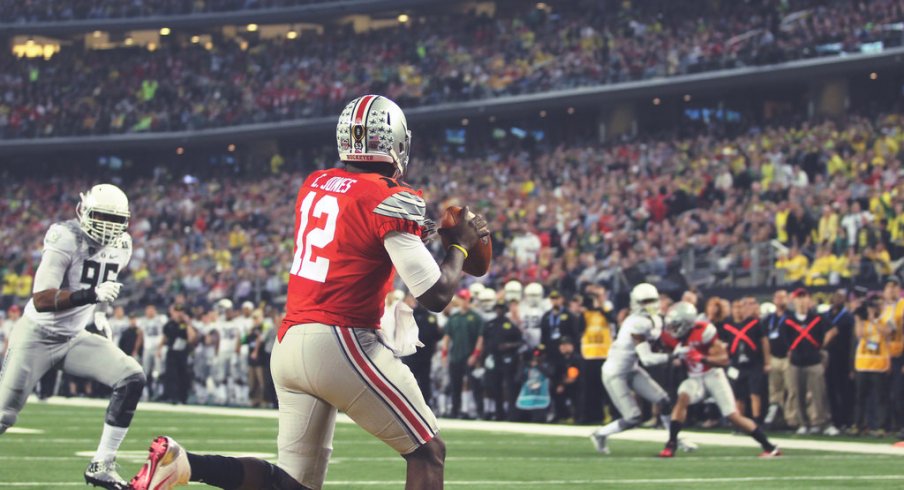The overwhelming narrative coming out of last week's national championship game was one of domination by the Buckeyes. Although they turned the ball over four times, the team from Columbus seemed to dominate for most of the evening, and the 42-20 final score was closer than the game felt to many.
But in reality, the beginning of the game was controlled handily by their west coast opponents. After marching down to score on their opening drive, the Ducks forced the Buckeyes to punt after only one first down on the ensuing possession.
Though Oregon wouldn't score on their second drive, they were able to flip field position by downing a punt on the Ohio State three-yard line. With a short two-yard gain on first and an incomplete pass on second, the Buckeyes quickly found themselves in a deep hole, looking at 3rd down with their backs against the wall.
More importantly though, the OSU offense wasn't moving in the way it had during the previous two games, as Cardale Jones already registered four carries to that point, but had yet to gain a single yard through the air. With all the momentum on Oregon's side, the Buckeyes looked for any kind of spark.
As Ross pointed out, Oregon consistently showed the Buckeyes one safety in the middle of the field that night, moving the other safety into the box to help against the run while defending downfield with a three-deep zone. The easiest way to attack any zone scheme is with flood routes that attack the zones of two defenders with three receivers, such as the sail route combination that has long been a staple concept in the OSU playbook.
Not only does this route combination overload one side of the defense, but it gives Cardale Jones a very easy deep-to-short read. But this version of the sail came with some wrinkles.
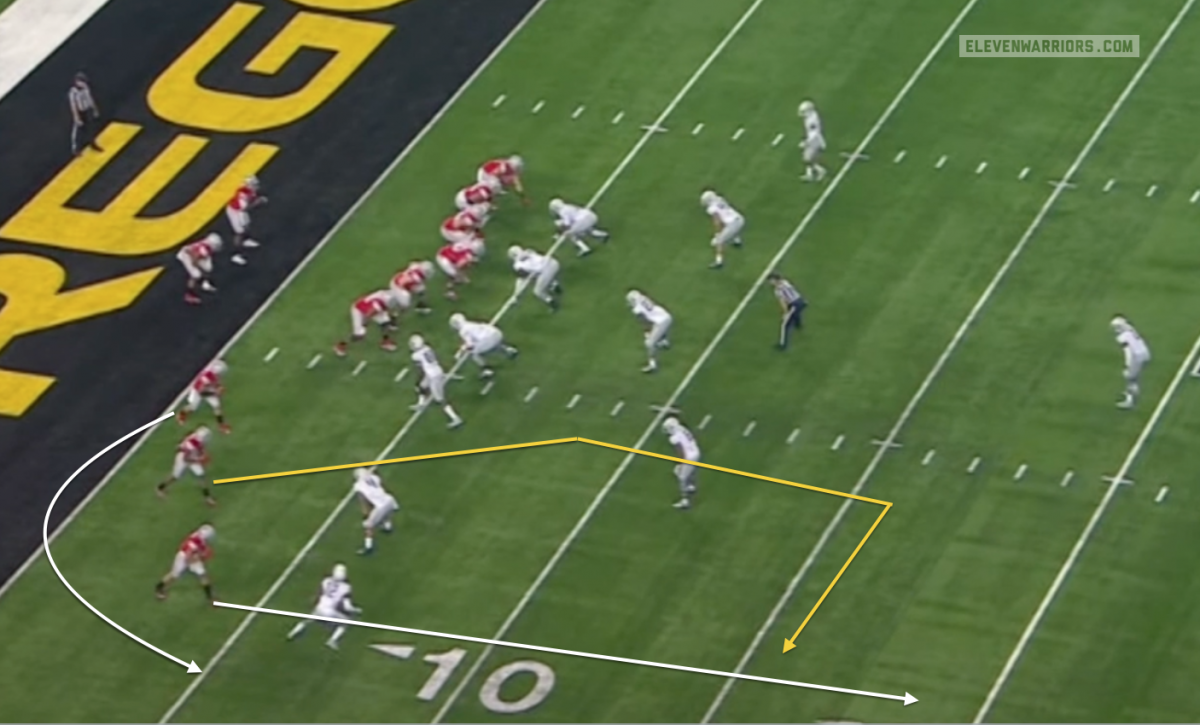
First off, the Buckeyes send their short route from Jalin Marshall on what looks like a bubble screen, instead of a short out route, which forces Oregon defensive back Erick Dargan (#4) to stay close to the line of scrimmage instead of gaining depth in his zone drop.
With Devin Smith running the cornerback deep on his outside "Go" route, Corey Smith adds a veteran tweak to his deep "Out" route in the middle. Instead of releasing straight downfield before cutting toward the sideline, Smith takes an inside release at the snap.
Not until after Smith gets Oregon DB Reggie Daniels (#8) to turn and chase him toward the middle does he make his outside cut, leaving Daniels turned the wrong way while the junior receiver has a wide open patch of turf in front of him.
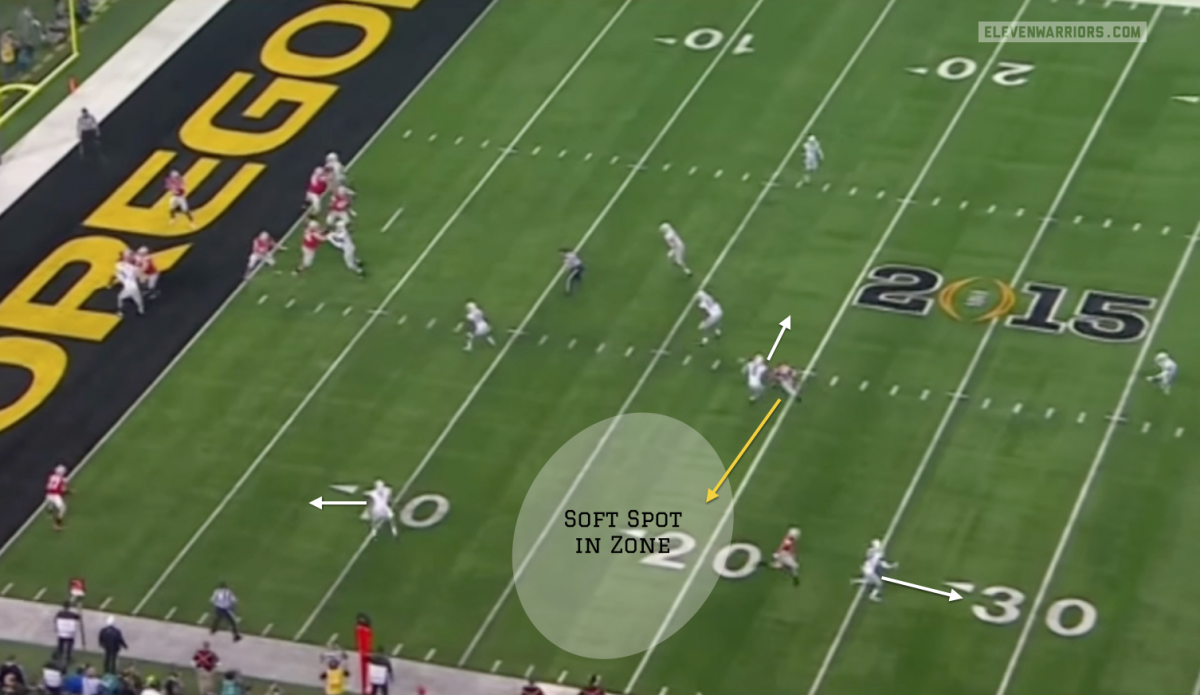
Thanks to only a three-man rush from the Ducks, Jones has plenty of time to step up and make an easy throw (for him, at least). Not only did the Ducks' passive zone allow the quarterback feel no pressure before making the pass, but five defenders that dropped into a zone never had a receiver to cover while the Buckeyes only attacked one third of the field.

At their own 31-yard line with a fresh set of downs, many coaches would be tempted to try and establish the running game, especially with such a relatively inexperienced quarterback. But as his style, Urban Meyer called for his offense to hit the gas pedal.
Just twenty seconds after Corey Smith stepped out of bounds, the Buckeyes were lined up again, seeing the same "1-high" safety look that Oregon had presented on the previous play. As Jones looked to the sideline for any adjustments, the OSU staff once again signaled to overload one side of the Ducks' defense in the passing game with a post-wheel combo.
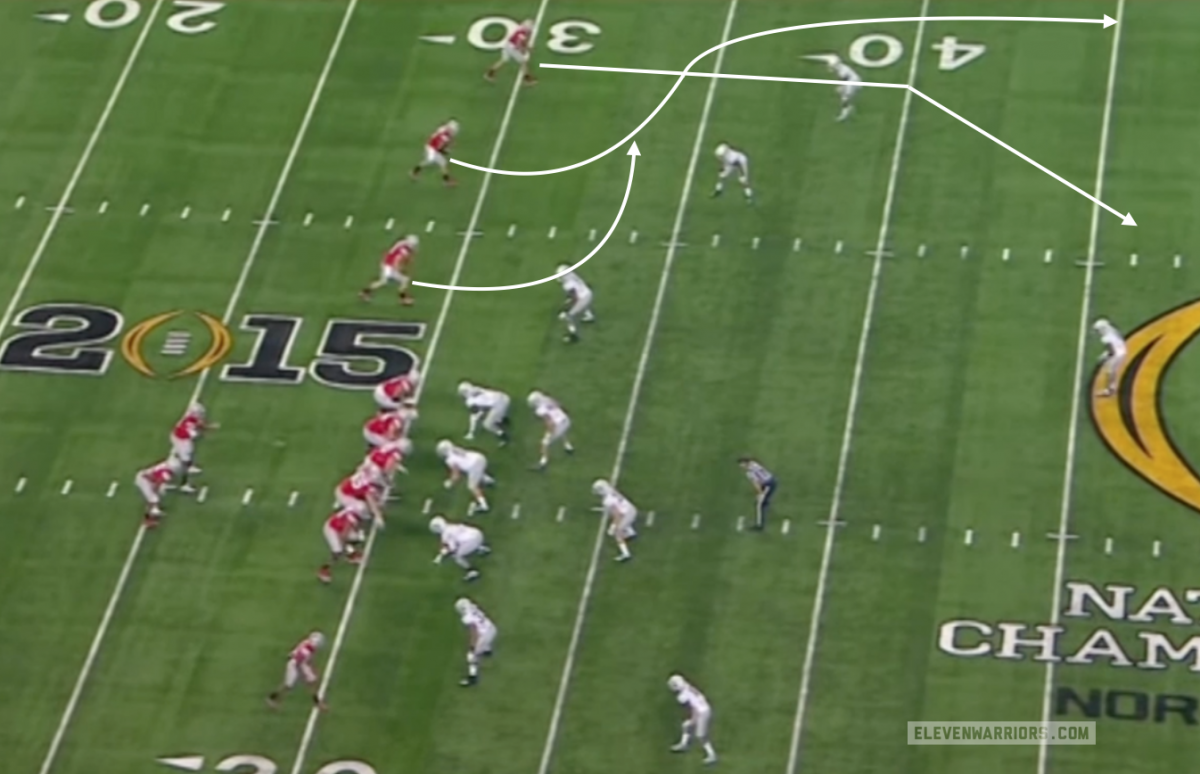
Once again, the threat of Devin Smith's speed would be Jones' first read, waiting to see if the safety in the middle of the field would cover up his deep post. If Smith was covered though, that would likely mean that the cornerback to his side would've stayed with him, leaving the sideline and the wheel route from Jalin Marshall open. If neither player was open deep, Jones would have an easy throw to Nick Vannett in the flat, or he could always simply tuck it and run for himself.
However, to make things easier for Jones from a recognition standpoint, the Buckeye coaches gave him an extra moment to freeze the defense with a fake handoff to Ezekiel Elliott. However, to truly sell play-action, many coaches believe it's best to pull a guard in the process, giving the inside linebackers a false read and making them believe the offense is running the "Power O" play.
As we can see, right guard Pat Elflein (#65) pulls to the left after the snap, giving the illusion of a run play, before setting the edge for Jones, who then rolls out to his left and sets up to throw outside the pocket.
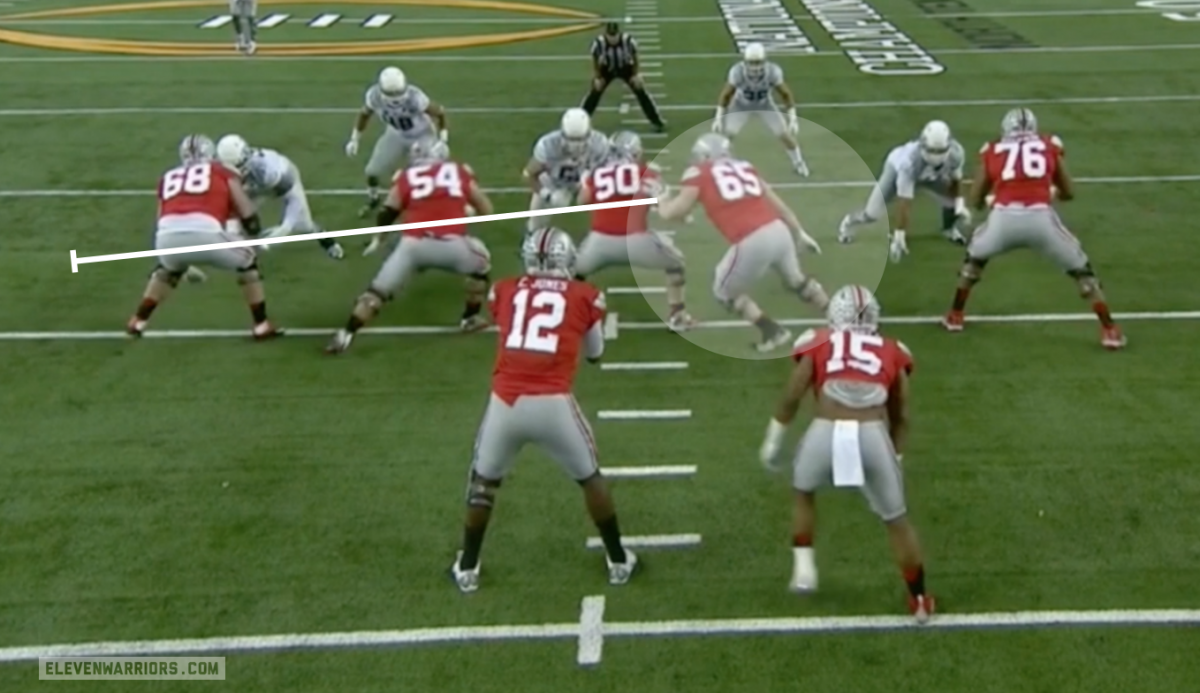
Seeing Smith covered deep, Jones turns his attention to Marshall who appears to have beaten his defender, Dargan. Although his body is naturally being pulled in the wrong direction, Jones is so strong that he is able to get his left shoulder turned back toward the line of scrimmage, allowing him to get the necessary torque to throw a dart downfield and to the sideline.
Few quarterbacks would be able to make this throw without putting lot of air underneath it, which would have allowed the defender to react better to the ball. As it played out though, Dargan reacted as well as any coach could've hoped, closing the distance between he and Marshall before the ball arrived.

But Marshall makes a super-human catch, showing incredible body control in the air as well as concentration to locate the ball and hold on before hitting the ground.
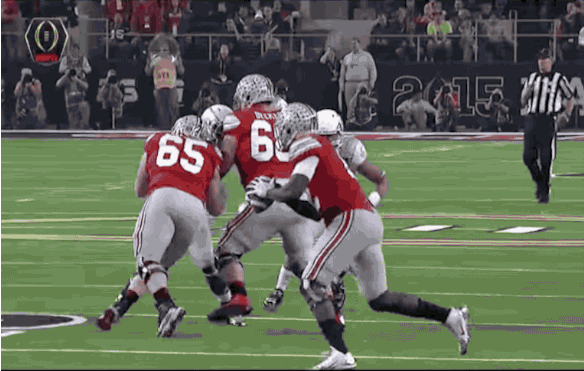
The safer throw certainly would've been to Vannett, who had a good four yards between he and his defender, and likely could've easily converted another first down. But thanks to Jones' faith in his own abilities and that of his teammates, the Ohio State offense completely flipped the field within a matter of seconds.
Not only did they have the ball in opposing territory, but they now had momentum and confidence on their side. It's easy to forget how young this team was, as Marshall and Smith had never played a down of FBS football just a few months before, much less the now infamous story of Jones' ascension. But one or two moments like this can give a young team a reason to believe in themselves, as well as trust the system being put in place by their coaches.
Six plays later, the Buckeyes would cap off their 97-yard drive with a touchdown, wearing down the Oregon defense both physically and mentally while setting a tone for the remainder of the evening. Jones would lead the offense to 538 total yards that evening, with a balanced attack that would see him average over ten yards per passing attempt.
Credit must be given to the coaching staff, not just for the development of Jones, Marshall, and countless other players that seemingly came from nowhere to be contributors on a national championship team, but also for identifying ways to simplify the game for them. All night long, the Buckeyes would take advantage of what the defense showed, often giving Jones only one half of the field to read along with an option to tuck and run when needed, while waiting for adjustments from the Oregon sideline that never seemed to come.
While such simplicity might not do wonders to prepare Jones for the NFL immediately, it does win football games at this level. Though he never seems lacking in confidence, the big man from Cleveland seemed much more comfortable after those two early throws.
